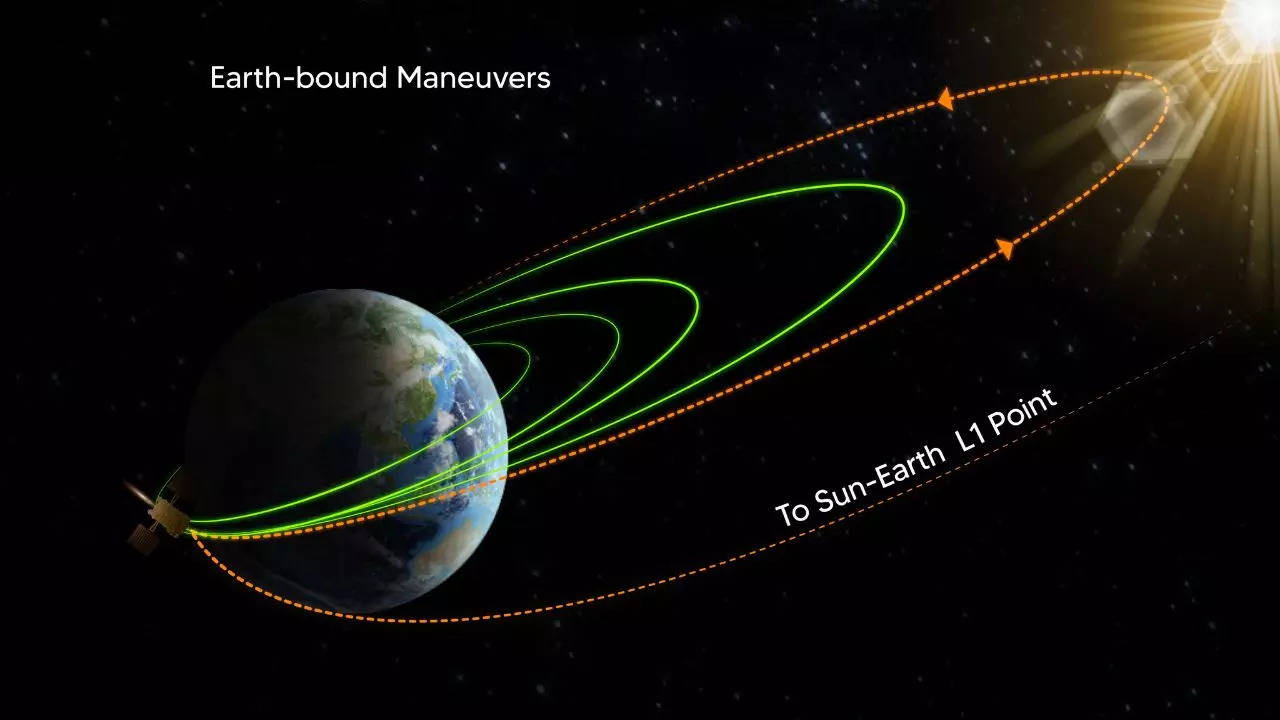ISRO has revealed that the Aditya-L1 solar mission is poised to reach its designated location at the Lagrangian point (L1), positioned 1.5 million kilometres away from Earth, by January 6. While the exact time is yet to be disclosed, it will be announced appropriately.
During a media briefing, S Somanath, the chairman of ISRO, confirmed this significant achievement.

The ISRO chief conveyed that, upon successful placement at the L1 point, Aditya-L1 would remain stationed there for five years. He emphasised the significance of the gathered data, noting its importance not only for India but for the entire world. According to him, this data would be instrumental in comprehending the dynamics of the Sun and its impact on life.
Somanath shared that ISRO devised a plan to construct an Indian space station, named ‘Bharatiya Space Station,‘ following Prime Minister Narendra Modi’s directives during the ‘Amrit Kaal.’
He mentioned, “In the space sector, we observe the emergence of new actors. Our commitment is to support, encourage, and nurture the economy around the new generation.” He added that while India may not guide in every aspect, the focus should be on excelling in sectors where the nation has the potential.
The Countdown Begins
Aditya-L1 has entered a crucial phase as it gears up for the halo orbit insertion. The spacecraft is in the concluding stretch of its remarkable journey. The countdown to the pivotal moment has officially begun.
India’s Aditya L1 spacecraft is on the verge of conducting an intricate manoeuvre as it prepares for insertion into the halo orbit encircling Lagrange Point 1 (L1)—a gravitational equilibrium point between the Earth and the Sun.
Having covered an extensive distance of over 1.5 million kilometres through outer space, the spacecraft is now navigating the final phase of its journey. Launched by ISRO from Sriharikota on September 2, 2023, the mission is anticipated to culminate on January 6, 2024.

Navigating the insertion into Lagrange Point 1 (L1) marks a pivotal and intricate phase of the Aditya L1 mission, demanding precise navigation and control.
Before being directed into a transfer orbit toward L1, the spacecraft underwent a series of four Earth-bound orbital manoeuvres.
Why is Lagrange Point 1 important?
The significance of Lagrange Point 1 cannot be overstated. Positioned at this point of gravitational equilibrium, Aditya L1 will enjoy an uninterrupted view of the Sun. This unique vantage point enables the spacecraft to delve into the study of the solar atmosphere, solar magnetic storms, and their potential impact on Earth’s environment.
What are the plans for Aditya L1?
The Aditya L1 spacecraft is geared to gauge paramount events such as Coronal Mass Ejections (CMEs) and interplanetary magnetic fields.
To ensure a smooth insertion, the ISRO team is taking meticulous precautions. They’re retaining a close eye on the spacecraft’s position and speed, making steady adjustments using onboard thrusters to stay on the path.
Additionally, there may be an eager cognisance of shielding the spacecraft’s instruments—just like the Visible Emission Line Coronagraph (VELC) and the Solar Ultraviolet Imaging Telescope (SUIT)—from the Sun’s effective radiation and particles. It’s a pinnacle precedence to maintain their capability.

Dealing with the inherent instability of Lagrange Point 1 adds another layer of complexity. The team has to carry out station keeping manoeuvres to hold Aditya L1 in its halo orbit, making modifications ranging from 0.2 to 4 m/s every 12 months. These manoeuvres are essential to counteract gravitational influences from different celestial bodies and manipulate the pressure from sun radiation. It’s a sensitive dance within the vastness of space.











